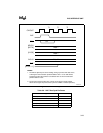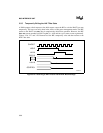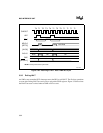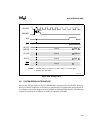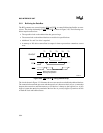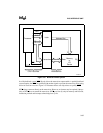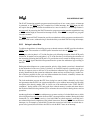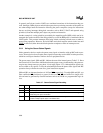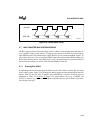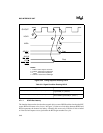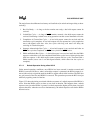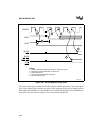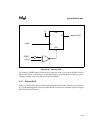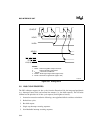
3-37
BUS INTERFACE UNIT
The WAIT instruction suspends program execution until one of two events occurs: an interrupt
is generated, or the TEST
input pin is sampled low. Unlike interrupts, the TEST input pin does
not require that program execution be transferred to a new location (i.e., an interrupt routine is
not executed). In processing the WAIT instruction, program execution remains suspended as long
as TEST
remains high (at least until an interrupt occurs). When TEST is sampled low, program
execution resumes.
The TEST
input and WAIT instruction provide a mechanism to delay program execution until a
hardware event occurs, without having to absorb the delay associated with servicing an interrupt.
3.6.3 Using a Locked Bus
To address the problems of controlling accesses to shared resources, the BIU provides a hardware
LOCK
output. The execution of a LOCK prefix instruction activates the LOCK output.
LOCK
goes active in phase 1 of T1 of the first bus cycle following execution of the LOCK prefix
instruction. It remains active until phase 1 of T1 of the first bus cycle following the execution of
the instruction following the LOCK prefix. To provide bus access control in multiprocessor sys-
tems, the LOCK
signal should be incorporated into the system bus arbitration logic residing in
the CPU.
During normal multiprocessor system operation, priority of the shared system bus is determined
by the arbitration circuits on a cycle by cycle basis. As each CPU requires a transfer over the sys-
tem bus, it requests access to the bus via its resident bus arbitration logic. When the CPU gains
priority (determined by the system bus arbitration scheme and any associated logic), it takes con-
trol of the bus, performs its bus cycle and either maintains bus control, voluntarily releases the
bus or is forced off the bus by the loss of priority.
The lock mechanism prevents the CPU from losing bus control (either voluntarily or by force)
and guarantees that the CPU can execute multiple bus cycles without intervention and possible
corruption of the data by another CPU. A classic use of the mechanism is the “TEST and SET
semaphore,” during which a CPU must read from a shared memory location and return data to
the location without allowing another CPU to reference the same location during the test and set
operations.
Another application of LOCK
for multiprocessor systems consists of a locked block move, which
allows high speed message transfer from one CPU’s message buffer to another. During the locked
instruction (i.e., while LOCK
is active), a bus hold, DMA or refresh request is recorded, but is
not acknowledged until completion of the locked instruction. However, LOCK
has no effect on
interrupts. As an example, a locked HALT instruction causes bus hold, DMA or refresh bus re-
quests to be ignored, but still allows the CPU to exit the HALT state on an interrupt.



